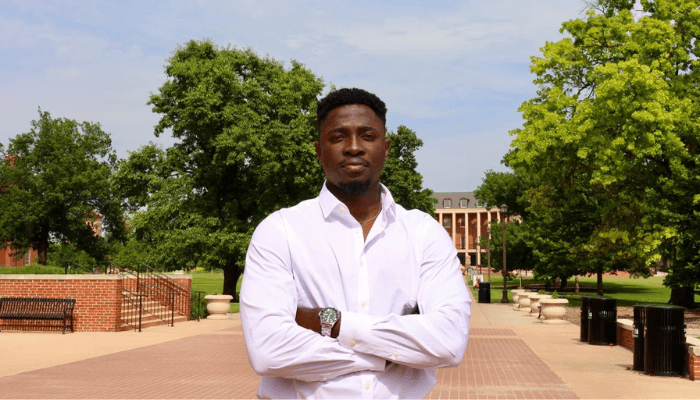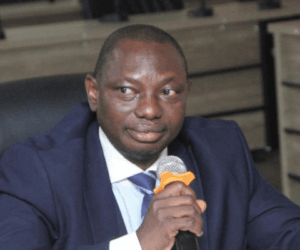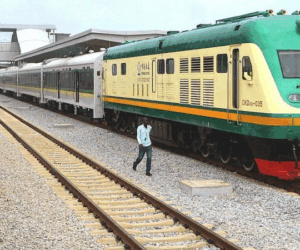When Michael Olagunju talks about roads, he doesn’t just see layers of asphalt and stone. He sees stories of innovation, sustainability, and a deep conviction that engineering can change lives.
The transportation engineer, now with MacArthur Associated Consultants in Oklahoma, has charted a path that bridges the digital and the physical, technology and infrastructure in Nigeria and the United States.
“I’ve always been a civil engineer at heart,” Olagunju said. “Technology was something I stumbled into, but civil engineering was always my foundation.”
That foundation was laid at Obafemi Awolowo University, where he graduated among the top five in his class. During his undergraduate years, curiosity pushed him beyond the drafting board.
What began with AutoCAD and Orion design tools led him into UI/UX, graphics design, and eventually software development. By his final year, Olagunju was working remotely as a front-end developer and later as a product manager for a startup, earning about N2.3 million monthly.
Yet, even as his tech career accelerated, something kept pulling him back to the tactile world of bridges and pavements. “My passion for civil engineering never went away,” he recalls. “I wanted to see the physical impact of what I was building, not just on a screen, but on communities.”
Engineering with Purpose
That conviction took him across the Atlantic to Oklahoma State University, where he earned his master’s degree in civil engineering with a specialisation in transportation engineering. There, Olagunju immersed himself in asphalt pavement research, investigating performance issues like rutting, cracking, and moisture susceptibility problems that plague roads worldwide, from the highways of the U.S. Midwest to the corridors of Lagos and Abuja.
His research focused on one of the most pressing questions in infrastructure today: how to make roads more sustainable and longer-lasting. A central theme was the use of Reclaimed Asphalt Pavement (RAP), a recycled material that helps reduce waste, lower production costs, and cut carbon emissions.
“The use of RAP supports global sustainability goals,” Olagunju explains. “It aligns with SDG 9 on infrastructure, SDG 12 on responsible consumption, and SDG 13 on climate action.”
By integrating recycled materials without compromising durability, Olagunju’s work pushes forward a new vision of road construction, one that is smarter, greener, and more cost-effective.
Redefining pavement standards
In one of his projects, conducted in collaboration with the Oklahoma Department of Transportation (ODOT), Olagunju proposed new, more accurate criteria for evaluating asphalt mixes. This achievement has earned him recognition within the U.S. transportation research community.
Traditionally, engineers measured rutting resistance using a metric called the Total Rut Depth (TRD). But as Olagunju observed, the TRD failed to distinguish between rutting caused by plastic deformation and that caused by stripping when moisture weakens the bond between asphalt binder and aggregate.
He proposed the adoption of the Corrected Rut Depth (CRD), which isolates plastic deformation from stripping to yield more reliable results, using this parameter. (The CRD which was developed by a researcher called F.Yin at NCAT.
“It’s a simple shift in measurement,” he explains, “but one that improves how we interpret performance data and, ultimately, how we build stronger roads.”
He also provided performance criteria for using the Stripping Number (SN) as a replacement for the inconsistent Stripping Inflection Point (SIP) used to assess moisture susceptibility. The SN provides a clearer signal for when moisture damage begins, helping engineers make better material and design choices.
Even more compelling, his team evaluated a faster, field-friendly testing device, the Indirect Tensile Test at High Temperature (IDT-HT), which can deliver results in under three minutes, compared to the six-hour testing window required by traditional methods.
From the lab to the podium
Olagunju’s findings were not just confined to the lab. Earlier this year, he presented his research at the prestigious Transportation Research Board (TRB) Annual Meeting in Washington, D.C., the world’s largest gathering of transportation experts.
His paper, co-authored with ODOT’s Asphalt Branch Manager, delved into evaluating Oklahoma’s asphalt mixes using the newly proposed metrics and the correlations among the various rutting parameters.
“To get accepted for a podium presentation at TRB, your paper has to go through a rigorous peer-review process,” he said. “It was a proud moment to share research that could help improve real-world infrastructure performance.”
Building on a tradition of excellence
At MacArthur Associated Consultants, where Olagunju now works as a transportation engineer, he’s applying those insights directly to field projects. One that stands out is the Lindsey Street project in Norman, Oklahoma, a corridor that had long suffered from flooding and traffic congestion.
Olagunju’s team is currently redesigning the roadway with integrated stormwater drainage solutions, transforming a problem-plagued area into a model of resilience.
“For us, excellence isn’t just about technical precision,” he said. “It’s about designing systems that respond to community needs and stand the test of time.”
Despite his growing footprint in the U.S., Olagunju remains deeply connected to Nigeria’s infrastructural challenges. He believes the country’s biggest roadblocks are not in technical capability but in planning, accountability, and maintenance.
“Many Nigerian roads fail not because they were poorly built, but because they were never maintained,” he said. “Timely resurfacing, like micro-surfacing or overlays, could save billions. But we wait too long and end up rebuilding from scratch.”
His message to Nigeria’s policymakers is clear: plan beyond political cycles and commit to preventive maintenance.
And to young Nigerian engineers dreaming of global opportunities, he said, “See international exposure not as an escape, but as a platform to learn and give back. The real value lies in applying what you’ve learned to solve problems at home.”
Engineering for home and the future
Looking ahead, Olagunju envisions becoming a licensed professional engineer leading large-scale, sustainable transport projects, bridging research and practice in both the U.S. and Africa.
But beyond titles and accolades, his mission remains to mentor younger engineers and champion a culture of lifelong learning.
“Engineering is demanding,” he admits. “But knowing that your work directly impacts people’s lives, that’s what keeps you going.”
Quoting philosopher Eric Hoffer, he adds: “In a time of drastic change, it is the learners who inherit the future.”
For Michael Olagunju, that future is already taking shape layer by layer, road by road, from Oklahoma to Nigeria, one sustainable pavement at a time.









